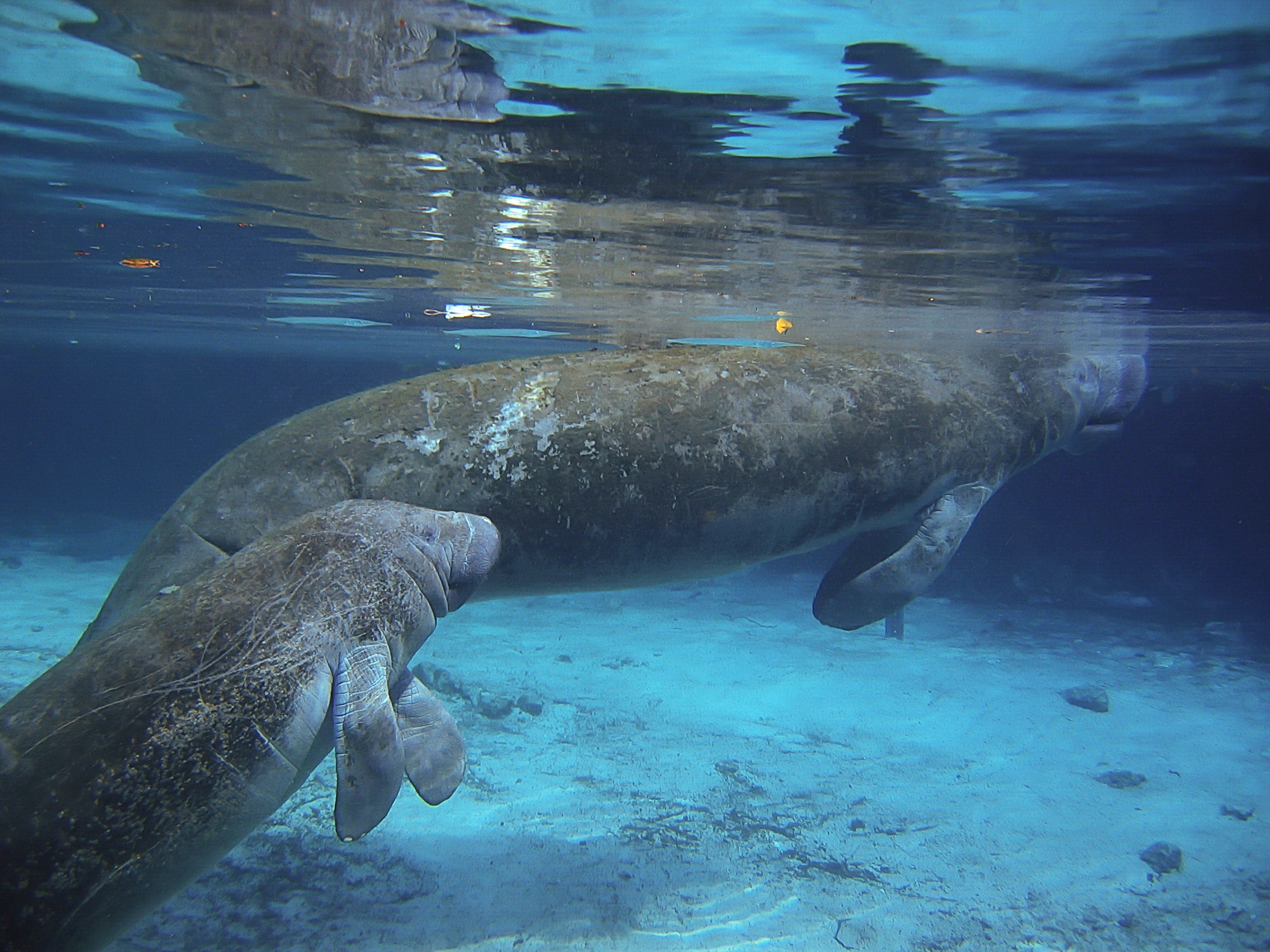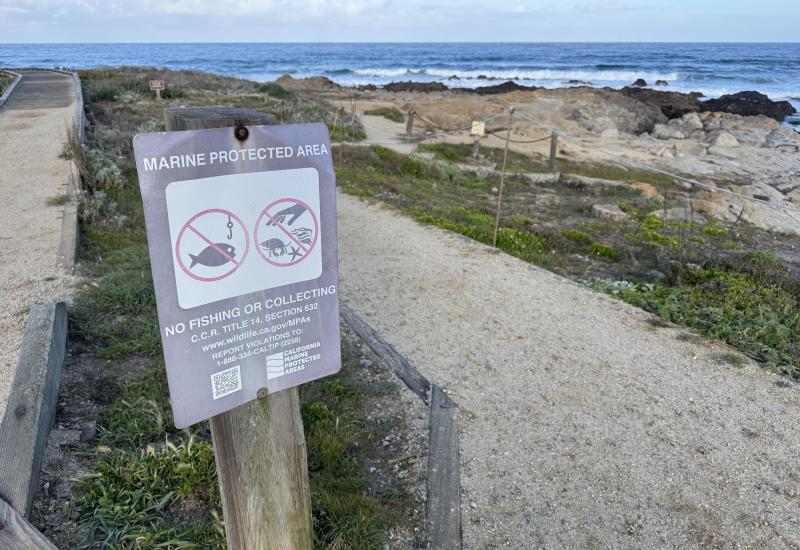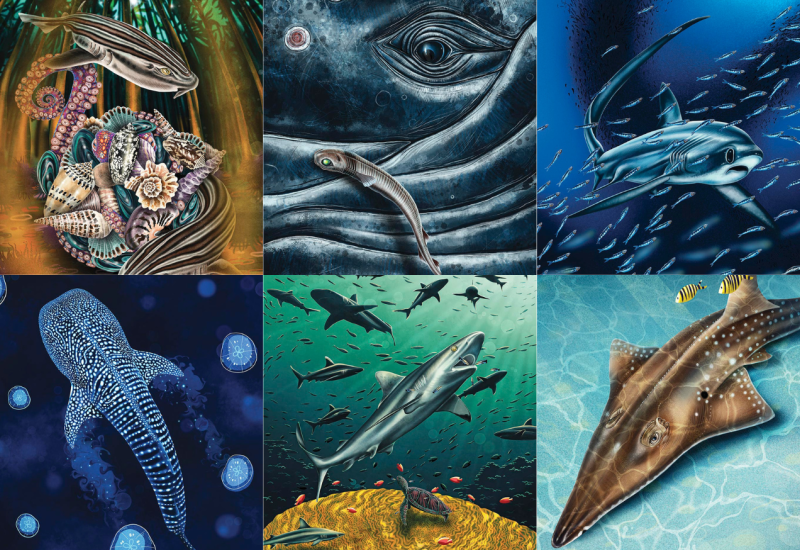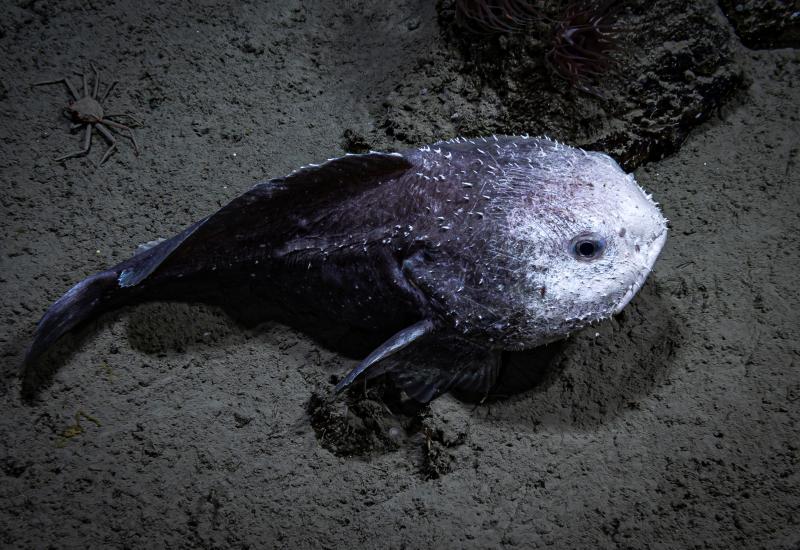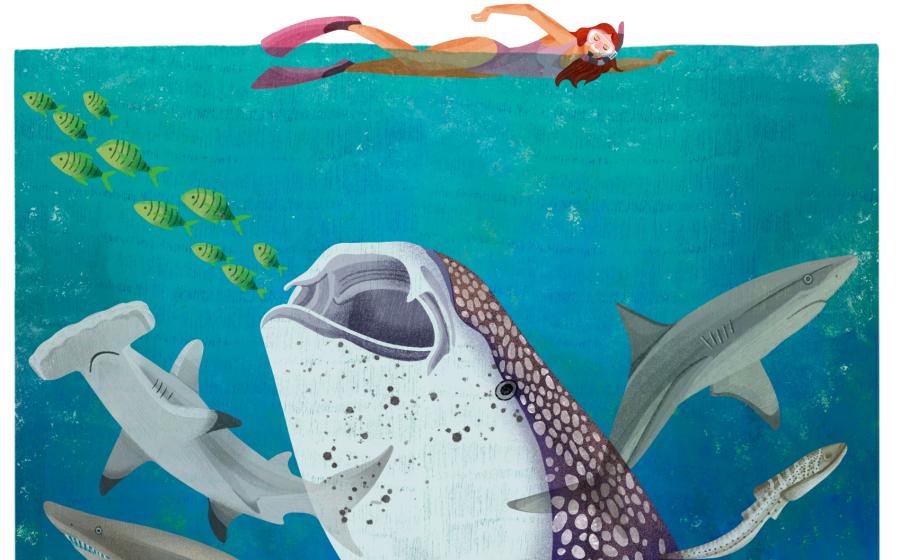Real Life Mermaids or Manatees and Dugongs?
Stories of mermaids date back to ancient Greek legends, decorate maps of the past, and were even confirmed by Christopher Columbus. The inspiration for these myths and fairy tales surprisingly come from real marine mammals we can still see today. While they don’t look quite like the stereotypical mermaid illusions we have created over time, they are fascinating and, in my opinion, ‘so ugly they’re cute,’ creatures that inspire wonder and love for anyone who sees them.
Dugongs and manatees are the gentle giants of the water or the “mermaids” once spotted by Columbus. Sometimes called sea cows since they spend their days slowly grazing on sea grass. These lumbering marine mammals live in shallow water along the coast of the tropics and can move between fresh and saltwater. Currently, there are three species of manatee and one dugong belonging to the order Sirenia (mermaid associations can even be seen in the Latin scientific description.)
Related Reading: How To Tell the Difference Between Manatees and Dugongs
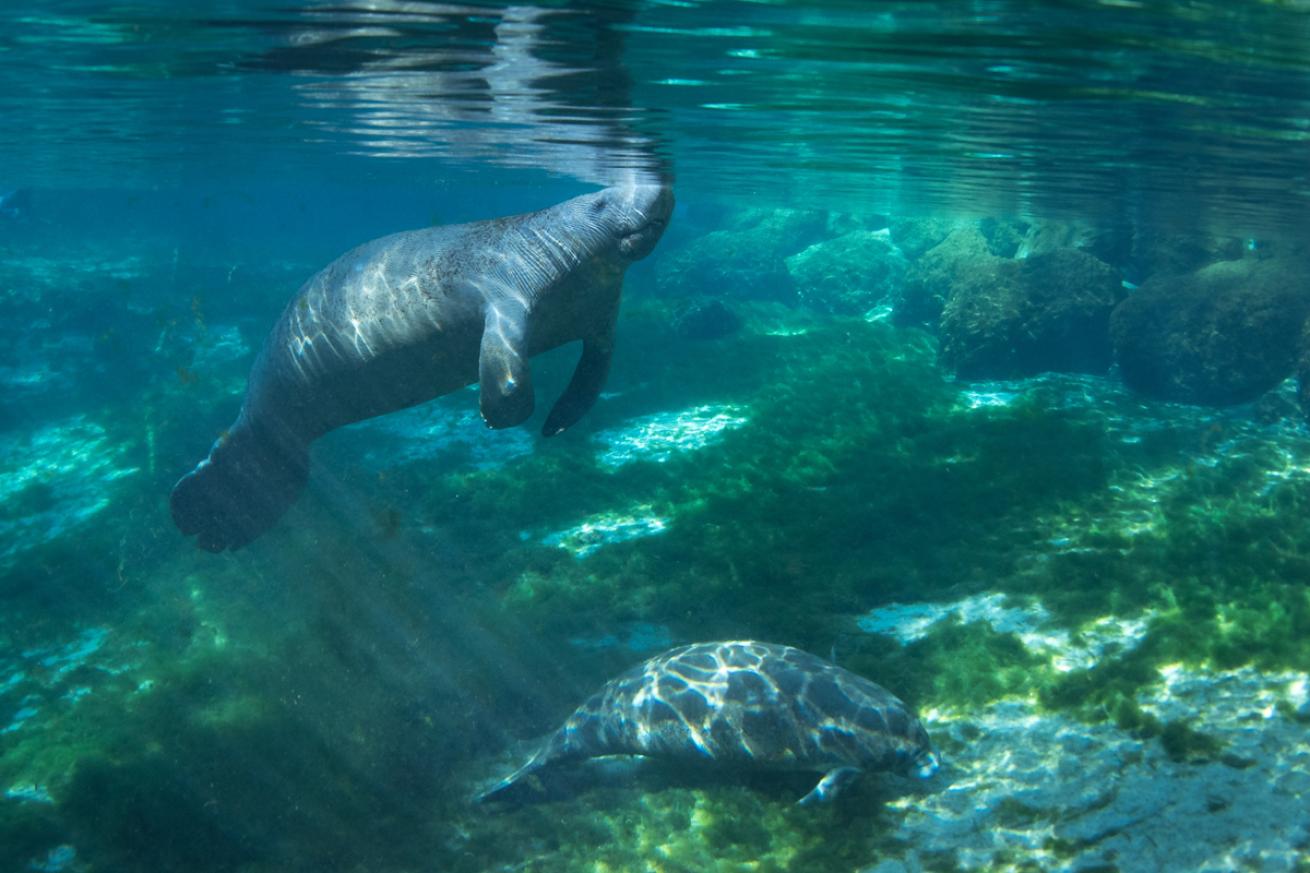
Brandi MuellerA manatee calf rises to the surface for a breath with an adult below at Crystal River, Florida.
Spanning the globe’s tropical waters, dugongs can be found throughout the West Pacific, East Africa and India in almost 40 different countries; although their population numbers are very low. Dugongs tend to be solitary or found in small groups. They can roam a wide area looking for food but they generally come back to the same places over time. The three species of manatees include the Amazonian, the West Indian and the West African and they can be found in the regions in which they are named. They tend to be solitary or aggregate in small groups
As divers, we tend to be most familiar with the West Indian manatees found around Florida and the southern east coast of the United States, the Gulf of Mexico and the Caribbean, and as far south as Brazil. The Florida manatees are known for a learned behavior where in the cooler winter months they congregate in warm-water outflows of power plants or swim up rivers to temperature-constant springs instead of migrating. They can’t survive in water colder than 60F and snorkelers can easily swim with them in these areas.
Recently I was looking at beautifully drawn world maps from the 1500s. The edges of the maps were decorated with sea creatures and within noted potential locations of mythological creatures such as dragons and sea monsters. When Magellan’s fleet circled the globe for the first time they were worried about encountering such beasts as well as getting too close to magnetic islands that would pull out every nail in their ships.
Lucky for the sailors they didn’t encounter magnetic islands or have to save themselves from these creatures, although they faced many other challenges during their time at sea. Perhaps the lack of freshwater and food deprivation lead to hallucinations of things like mermaids or the loneliness of being at sea for months or years at a time made them hopeful to see a beautiful sea maiden.
Perhaps it’s the way manatees and dugongs come to the surface to get a breath, showing a shadowy human-like figure (but with a tail) to those looking down from a ship above. The optical illusion of a big shadowy body mixed with sunlight’s reflection on the water and perhaps a dash of wishful thinking from sailors spending months and even years at sea with no women on board. Who wouldn’t conjure up illusions of sweet, singing, beautiful sea maids? Perhaps the luring to their death was a bit wishful too – a way to get out of a stinky, rat-infested, leaky ship. Although, Christopher Columbus described them as “not half as beautiful as they are painted.”
Mermaids, (or manatees and dugongs) also show up in other places including as Greek mythological figures. In drawings over 3,000 years old in Malaysian caves, and on carved storyboards detailing the history and stories of Palau. While visiting Palau, I saw bracelets made from the vertebrates of dugongs that were worn by chiefs and queens hundreds of years ago.
Although the ancient mariners probably didn’t know it at the time, dugongs and manatees do have some very human (or mermaid-like) characteristics, particularly if one encounters a skeleton. While the lower half is fish-like, the upper half has no dorsal fin or hind limbs but has a very human-like rib cage and the front forelimbs (or flippers) look like an arm with five fingers.
Human-like similarities are also seen when it comes to their young. Newborns (which can be around four feet long and weigh over 60 pounds) stay very close to their mothers for about 18 months. Calves have even been observed sucking on their flippers (like babies suck their thumbs).
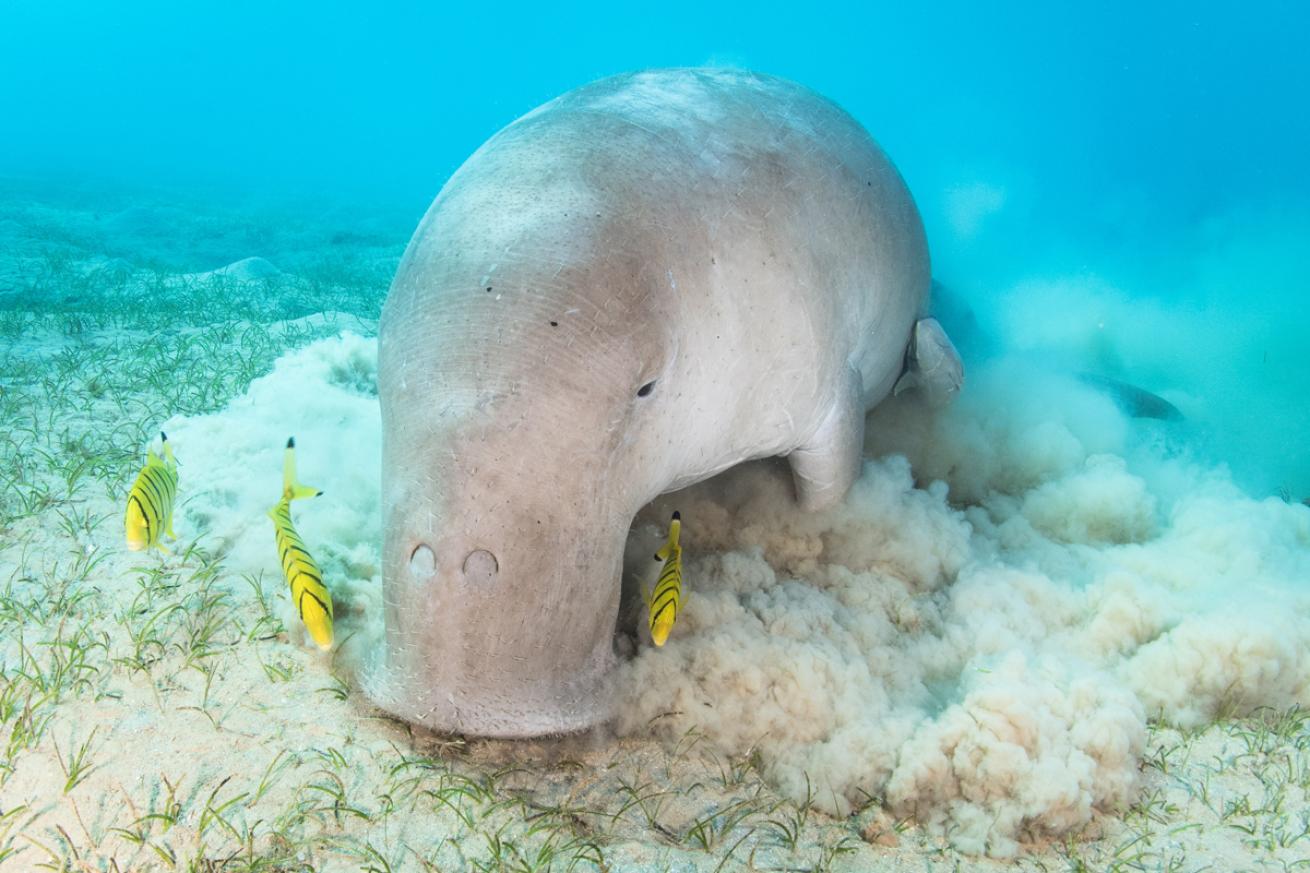
Brandi MuellerA dugong feeds in the sand while golden trevally's try to scavenge at Marsa Alam, Egypt.
Dugong vs. Manatee vs. Mermaid
Having spent several years living in and visiting Florida, I learned to love manatees from an early age. I never quite saw the mermaid connection (fairy tales and Disney gave me a very specific idea of what a mermaid looked like, and I never saw a manatee with red hair.) But several years ago I went to Egypt to dive the Red Sea and was lucky to see a well-known dugong named Dennis off of Marsa Alam. My dive guide and I were underwater and there were also snorkelers in the water. I was diving next to Dennis as he inhaled seagrass creating a sand storm all around him. He paused his feasting to ascend to take a breath and as I was looking up at him from below, I finally saw it. The tails of the Dugong are like the mermaid tails we envision, similar to dolphin or whale tails. Manatees have a paddle-like, round tail. As Dennis swam among the snorkelers his silhouette shadow looked very human but with a mermaid tail.
Besides the tail shape, dugongs have a more downturned snout. Elephants are a close relative of dugongs and manatees, and I see the shortened trunk-like resemblance in the dugong more than the round-faced manatee. If you get a look in their mouths, manatees have molars how we imagine molars to be, whereas dugongs have peg-like teeth. Dugongs can also have two tusk-like incisors.
Manatees on average grow a bit longer and heavier than dugongs, but both have life spans of over 50 years.
Threats
Like so many ocean animals, the dugong and manatee face many issues. Their slow-moving, surface-dwelling habits make them very vulnerable to strikes from boat traffic and entanglement in fishing nets. While hunting is illegal in most places, dugongs, in particular, are still poached for food, oil, and traditional medicinal uses. Fertilizers and other pollution runoff can harm the environment they live in and also poison the animals. Climate change is causing issues that include water that is too cold, forcing the animals to move to different areas or water that is too warm which can trigger algae blooms and red tides that affect the animals and their food sources. Increases in severe storms can destroy the shallow seagrass beds and estuaries where the animals feed. Manatees and dugongs are listed as vulnerable to extinction by the International Union for Conservation of Nature.
Snorkelers can reliably see manatees around Florida in the winter months when they tend to congregate in the warmer water of freshwater springs. It can be more difficult to pin down the exact location of dugongs, although some places occasionally have a resident stick around for a while, such as in Marsa Alam, in the Red Sea, Egypt. Getting a glimpse of these mythical mermaids is an amazing experience, and perhaps if you squint your eyes when the sun is just right; you may be able to see what the sailors saw hundreds of years ago.
RELATED:
Tips for Snorkeling with Manatees

